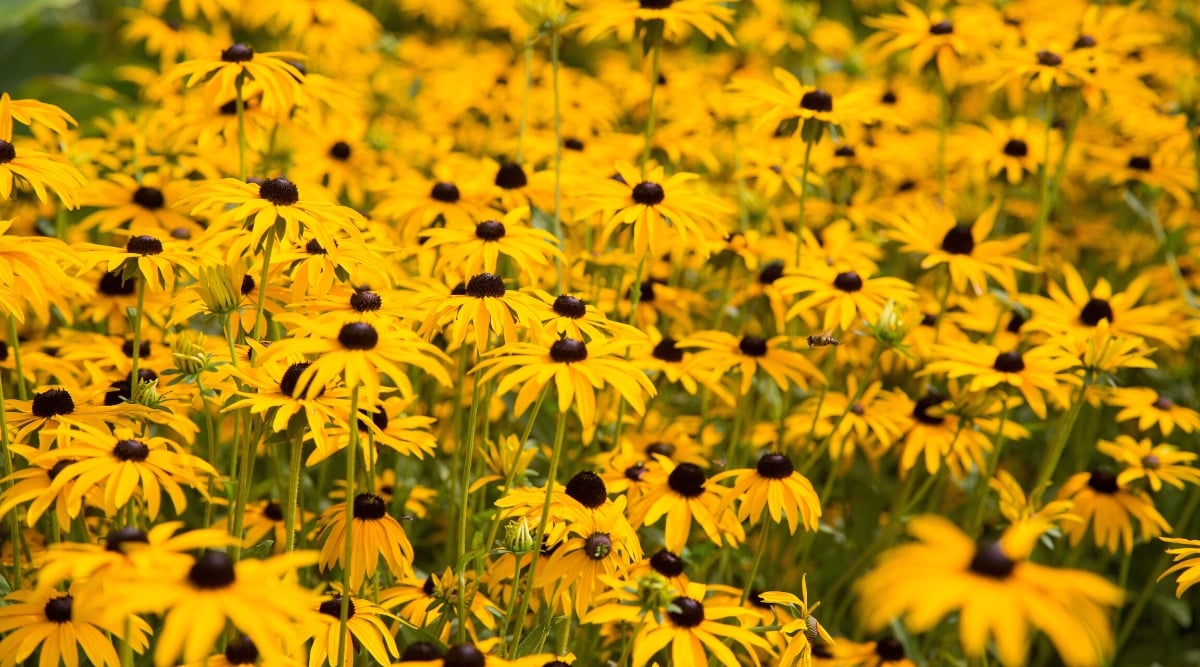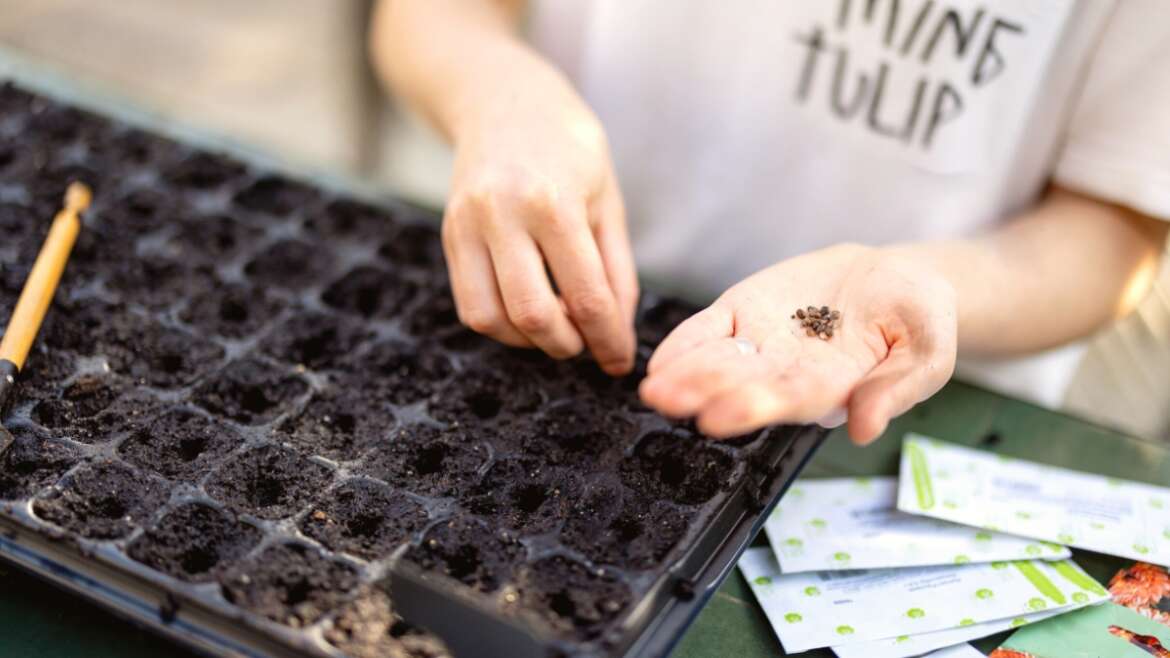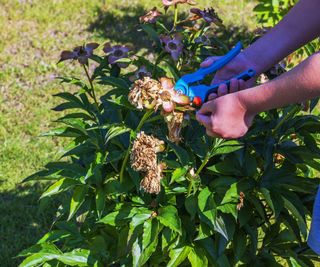New Year’s resolutions are a controversial subject. Most people either love them or consider them entirely useless. But even if you form part of the latter camp, it’s hard to deny the feeling of newness and excitement that a change in year brings.
I like to use this energy boost to set out my garden resolutions for the year. And if you’re allergic to New Year’s resolutions, you can always call these goals or intentions instead. Whether you’re learning a new skill, growing something unique, or improving the way you garden, it’s always good to try something new.
Grow More From Seed
Resolve to grow from seed for cost savings and variety.
Although it’s one of the worst traits for a gardener, I tend to be quite impatient about new projects in my backyard.
Once an idea sparks, I want to get going immediately to turn my vision into something tangible. And since plants take a while to develop from seed, this usually involves a trip to the nursery to buy mature plants that cut out wait time.
But growing from seed comes with many benefits, from saving costs to better control over the environment. Plus, there are many more unique species and cultivars to choose from when growing from seed compared to the limited selection at nurseries.
That’s why one of my resolutions this year is to grow more plants from seed, reaping all the benefits and expanding my horizons. Maybe I’ll learn a little more patience along the way, too.
Improve Soil Health
 Crucial to your success, the soil health impacts plants and gardens.
Crucial to your success, the soil health impacts plants and gardens.
Soil is the foundation of successful plant growth. But its importance is often overlooked in favor of more exciting or flashy gardening jobs. It may be messy, but you’ll be surprised how much of a difference improved soil health will make for your plants and your garden.
With a bit of research, it’s not hard to improve upon. Start by assessing your soil type and conducting tests to look for deficiencies and determine pH. From there, you can make adjustments like adding compost and encouraging microorganisms to improve health.
Choose More Native Plants
 Embrace the lasting trend of growing native plants, as they offer eco-friendly, low-maintenance options.
Embrace the lasting trend of growing native plants, as they offer eco-friendly, low-maintenance options.
One of last year’s biggest trends that shows no signs of slowing down is growing native plants. Transforming your backyard into a native paradise has several benefits for the environment and also for you as a gardener.
Local native plants are prioritized in sustainable gardens for their limited use of resources and support for local wildlife. Because they are adapted to the area, they use less water (as they’re accustomed to the natural rainfall patterns of the region) and are happy with the existing soil type. Pest control is also simplified, avoiding any extra maintenance or harsh chemicals.
This also makes native plants less maintenance-intensive, saving you time on garden chores. You won’t need to fight against a plant that doesn’t want to grow in your garden. Rather, you’ll find native plants become established quickly and give you little trouble.
Understand Your Environment
 Closely observe your garden environment, tracking sun, rainfall, and more.
Closely observe your garden environment, tracking sun, rainfall, and more.
To become a better gardener, make understanding your garden environment one of your central resolutions this year. This is ideal for analytical gardeners who love working with data. You probably already know your USDA zone and understand how the garden changes throughout the seasons, but a little more detail can go a long way to a thriving garden.
Start by assessing how the sun moves throughout the day and how that influences temperature and soil moisture retention. Keep track of how these elements change each season to choose the plants that will be happiest in those environments.
You can also watch for rainfall (and where rain settles in your garden), humidity, and soil quality, taking note of how they change throughout the year. Track your findings often to notice patterns or trends that may help you down the line.
Start A Garden Journal
 Opt for garden journaling to enhance productivity and track gardening activities, ensuring efficient planning for future seasons.
Opt for garden journaling to enhance productivity and track gardening activities, ensuring efficient planning for future seasons.
Journaling is an often-recommended New Year’s resolution for clearing your head, improving productivity, and achieving your goals. But if the typical journal isn’t for you, try garden journaling instead.
Garden journals track everything you do in the garden, from sowing seeds to harvesting. A record of all your activities helps you assess the performance of your plants and keep up with regular maintenance like weeding or mulching.
We all think we’ll remember the day we planted those seeds while doing it, but with so much going on in the garden, important dates are easy to forget. Take the stress out of managing your backyard by writing everything down. You can also use this to plan and learn from the performance of past seasons going forward.
The Epic Garden Journal is a great resource, containing a full calendar for planning ahead, plant profile pages, and helpful references along the way.
Invest In A Greenhouse
 Invest in a greenhouse for expanded gardening possibilities, even in smaller spaces.
Invest in a greenhouse for expanded gardening possibilities, even in smaller spaces.
If you’ve always wanted a greenhouse in your backyard, this year is the time to make it happen. Whether you’re building as a DIY project or saving up to buy, a greenhouse is one New Year’s resolution you certainly won’t regret.
The controlled conditions inside a greenhouse expand your gardening possibilities, especially if you live in a cooler climate. Seed starting improves, sensitive plants are protected, and you can grow a long list of plants you otherwise couldn’t without the protection of a greenhouse space.
You don’t need a massive building to start – even a small greenhouse can provide ample space for all your gardening needs.
 Join your local gardening community to connect with fellow plant enthusiasts and gain valuable insights.
Join your local gardening community to connect with fellow plant enthusiasts and gain valuable insights.
If you can’t stop talking about plants or sharing your garden victories and mistakes with anyone who will listen, joining your local gardening community is the perfect resolution.
Look for local groups, meetups, and talks in your area to get to know your plant-loving neighbors and expand your knowledge simultaneously. It’s great to learn from gardeners who know the area and have done it all before, especially if you’re new to the neighborhood.
Grow ‘Edimentals’
 Embrace the ‘edimental’ trend, integrating visually appealing edible plants into your landscape.
Embrace the ‘edimental’ trend, integrating visually appealing edible plants into your landscape.
‘Edimental’ is set to be the buzzword of the year. It’s a combination of edible and ornamental, used to describe edible plants which also have ornamental value. You could argue that all plants have some ornamental value, but it’s tough to deny that some vegetables are prettier than others.
Step away from the traditional conception of a vegetable garden this year by dotting pretty edimentals around your landscape. Leafy greens like ‘Dazzling Blue’ kale or colorful produce like ‘Gold Rush’ bush beans are a visual delight that looks just as good in the garden as in the kitchen.
Start Composting
 Save money and enrich your garden by starting your composting journey this year.
Save money and enrich your garden by starting your composting journey this year.
Compost is incredibly useful in the garden, building soil structure and providing essential nutrients to your plants. It’s tough to garden without it, but it can be pricey if you buy continuously to cover a large area.
The solution is to start composting yourself, an ideal garden New Year’s resolution for you and the environment. Composting limits waste and makes good use of your kitchen and garden scraps, limiting the need for other soil amendments and fertilizers.
It’s also free and not as tough to get started as you may think (despite the composting myths and misconceptions). Whether you choose a massive pile in your backyard or a small bokashi bin to start, this is one resolution you won’t certainly regret.
Grow Something Unique
 Experienced gardeners can try growing something unique this year to reignite excitement.
Experienced gardeners can try growing something unique this year to reignite excitement.
For beginner gardeners, growing anything successfully is an exciting endeavor. But for experienced gardeners who have seen it all season after season, you may look for that spark of excitement this new year.
Now is the time to grow something unique and out of your comfort zone to change it up. It could be something unique to you – like planting fruit trees rather than sticking with vegetables – or a unique cultivar of something you love.
I want more garden color this year, so I’m trying a few cultivars with out-of-the-box hues. These are some of our favorites:
Limit Lawn Space
 Consider reducing lawn space for a more environmentally friendly and productive garden.
Consider reducing lawn space for a more environmentally friendly and productive garden.
Lawns have become a controversial topic in the gardening world. They are a prized feature for many gardeners but aren’t great for the environment and take up large areas that could be used for beneficial plants.
Before anyone gets up in arms, I’m not advocating for removing all lawns everywhere. I use my lawn often as a recreational space for sports or picnics, and my pets love running around in the open area. However, I have started slowly cutting back on lawn space by leaving sections to grow naturally and replacing others with beds full of native plants.
Limiting your lawn area gives you the best of both worlds: less maintenance and more space for growing.
Master A Tricky Plant
 Challenge yourself by growing plants you’ve been afraid to try for a rewarding experience.
Challenge yourself by growing plants you’ve been afraid to try for a rewarding experience.
To challenge yourself with your garden New Year’s resolutions, try growing and mastering a plant you’ve been afraid to grow.
Many genera and species have reputations for being fussy or only suitable for the most experienced gardeners. You may be scared to grow mysterious carnivorous plants or try your hand at bonsai. I avoided orchids for the longest time, but once you try it, you’ll often find it easier than you think with some practice and research.
Plus, you’ll get bragging rights among your gardening friends when you get it right.
Save Water
 Save water by collecting rainwater, reusing household greywater, and choosing drought-tolerant plants.
Save water by collecting rainwater, reusing household greywater, and choosing drought-tolerant plants.
The sustainability trend of the past few years has only grown. Although gardening may seem inherently environmentally friendly, it can do more harm than good if you’re not careful. High water usage is one issue easily resolved by making saving water in your garden a New Year’s resolution.
Gardens use up tons of water, particularly if you live in an area with little rainfall or have thirsty plants or masses of lawn to take care of. Rather than using fresh water, collect rainwater in buckets or tanks to save resources and money. You can also reuse water inside your home if you carefully monitor product usage.
Another way to save water is by choosing your plants wisely. There is a long list of drought-tolerant plants that will drastically cut your need for water, preserving water resources and saving you time, too.
Start A Raised Bed Garden
 Start gardening hassle-free with stylish, customizable, and durable raised beds.
Start gardening hassle-free with stylish, customizable, and durable raised beds.
For beginners new to gardening, installing raised beds is the easiest way to get started with limited hassle.
Raised beds are incredibly popular, and for good reason. They allow for easy accessibility, control over conditions, and more variety. I also love them for their design benefits. Raised beds keep gardens tidy and allow the plants themselves to shine.
Birdies Metal Raised Garden Beds come in different shapes, colors, and sizes, allowing you to customize your space easily. They are also quick to set up and last for years, limiting the need to replace materials (like wood) and rebuild. For the DIY enthusiasts, try making your own beds as a weekend project with the many online tutorials.
Involve The Family
 Involve the whole family in gardening for improved moods, lower stress, and educational benefits.
Involve the whole family in gardening for improved moods, lower stress, and educational benefits.
The benefits of gardening are well-documented – everything from improved mood and lower stress to physical activity. While you may have experienced these benefits for yourself, why not get the whole family involved to see the benefits for themselves?
Gardening particularly benefits children, teaching them about the environment and improving their fine motor skills and memory. It’s not all about chores, either. Involve kids in exciting tasks like planting and harvesting so they feel more connected to nature.
If you’re unsure where to start, this Children’s Garden Seed Collection contains a range of plants to get kids excited about gardening.
 Share garden surplus with family, friends, and neighbors, fostering community and reducing waste.
Share garden surplus with family, friends, and neighbors, fostering community and reducing waste.
Look no further than your backyard for those who want to give back this year! There are many ways to share your garden with family, friends, and neighbors, from leftover produce to fresh-cut flowers. Beyond the appreciation, you may also encourage them to also start gardening and giving back.
If you have more produce than you know what to do with, consider donating your excess to local charities or leaving them out for neighbors to collect. This allows you to reduce waste and foster a sense of community around gardening at the same time.
Grow All Your Food From Scratch
 Challenge yourself by growing all your food from scratch, a serious but rewarding endeavor.
Challenge yourself by growing all your food from scratch, a serious but rewarding endeavor.
If you want to go all out on your New Year’s resolutions and try a serious challenge, consider ditching the grocery store and growing all your food from scratch.
I say serious challenge because while growing food to supplement your meals is common, only eating what you have grown yourself is next level.
Growing everything from scratch requires extensive planning to ensure there is always produce available (and enough produce to cover all your daily meals). If the whole year is too daunting, you can always try it for a few months when the garden is most productive. Throw in some foraging to cover anything you can’t grow yourself.
Final Thoughts
When you start your gardening goal setting, consider these resolutions to add to your list. Even if New Year’s resolutions aren’t your thing, use them to inspire your gardening year ahead.




